Description
Traditional Turkish Miniature & Paintings Workshop
Turkish Miniatures are he oldest surviving illustrations belong to the Uighur Turks. The eight and nineth century paintings found at Chotcho, there capital in Turfan, are the earliest examples of Turkish book illustrations known. Although numerous wall paintings can stil be seen, ver few book illustrations still exist. The people in these miniatures, especially male figures, have portrait quality, with their names inscribed below. After tese earliest examples, there was almost four centuries of time gap, which no book illustrations survived, until the preiod of the Suljuks in Anatolia. However the figrues seen in Seljuk art still show the tradition of Uighur paintings. The minatures illustrate a fantasy world of demons, evil spirtis and sceens from nomadic life. There are also other Seljuk works in different styles showing evidence of Byzantian influence.
Due to its rich subject matter, longevity, and freshness, Turkish miniature painting of the Ottoman period occupies a special place in the history of Islamic painting. This form of art continued without interruption for nearly four centuries. There are examples of miniature painting which date from the middle of the fifteenth to the beginning of the nineteenth centuries. Artistic trends and tastes are also evident throughout this period.
Our Miniature & Watercolor Painting Workshops :
We have an Art Studio in Sultanahmet area and our teachers are professional in Traditional Turkish Miniature & Watercolor Paintings. In our studio, we give beginner, intermediate & advanced level of traditional Turkish Miniature & Watercolor painting Workshops. Usually workshops are 2 hours based and can finish one project.
In our studio, we provide all the materials for our students including old miniature papers.
Group workshops for High Schools and Universities can be provided all year long.
In our studio, you can visit us and see & purchase our art works. For any Question : E-MAIL
Bazaar Turkey – Les Arts Turcs Art Studio
Alemdar Mh. Incili Cavus St.
No: 19 Floor : 3 (Behind The Underground Cistern)
Sultanahmet 34110
Istanbul, Turkey
Contact : Mr. Alp or Mr. Nurdogan ( Phone : +90 544 220 10 22 )
E-mail : info@bazaarturkey.com
Google Maps : https://goo.gl/maps/uXuyRmELZsx
Turkish Miniature & Painting Workshops
(2 Hours workshops- Per Student )
1 Guest : 75 Euro
2 Guest : 60 Euro
3-6 Guest : 55 Euro
7 and More Guest : 50 Euro
Workshop Includes.
- These are private events and runs upon request.
- English Guidance and assistance service.
- Workshop area & equipments are included.
- 2 Hours workshop in our Studio.
- Discount rates for groups.
- For more info please send us an e-mail.
Pictures from Our Turkish Miniature Class in Sultanahmet
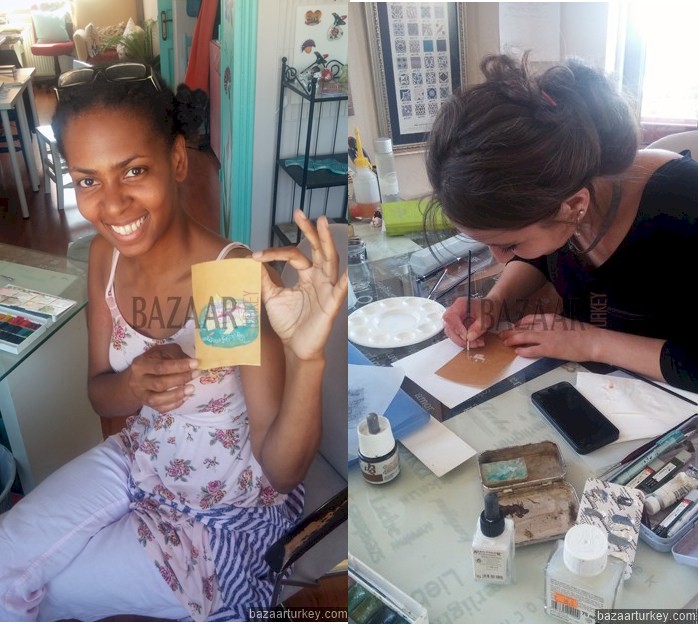

History of Ottoman & Turkish Minature Paintings
Ottoman miniatures and illuminated manuscripts were prepared mostly for sultans but also for important and powerful figures in their retinues. The most important of these works are still preserved in the place in which they were produced, for example, Topkapı Palace in Istanbul, and other palaces of the Ottoman sultans. Other museums and libraries in Istanbul also house rare manuscripts containing outstanding examples of Turkish miniature painting. In addition, Ottoman miniatures can be found in museums, private collections, and libraries around the world, most notably the Chester Beatty Library in Dublin.
A distinctive feature of Ottoman miniature art is that it portrays actual events realistically yet adheres to the traditional canons of Islamic art, with its abstract formal expression. Nearly all these paintings are concerned with important events of the day, such as Turkish victories, the conquest of fortresses, state affairs, festivals, formal processions, and circumcision feasts.
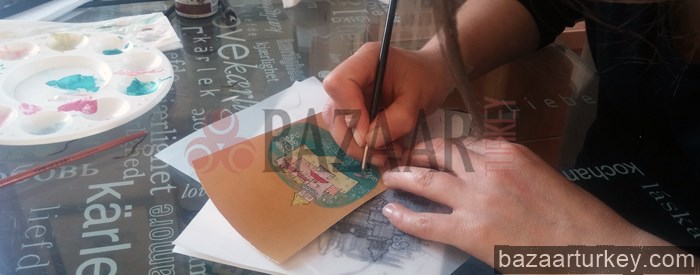
The nakkaş’s (designer-painters), of the Ottoman court were required to illustrate daily events. To preserve the freshness of the works they prepared and to ensure that the orders of the sultan were carried out, they worked very rapidly, with the result that the Turkish miniature is devoid of fine and elaborate ornamentation. The Ottoman painter arrived at a spare mode of expression, free of superfluous detail and focused on the essence of its subject. Ottoman miniatures are also records of contemporary events, filtered through the artists’ own concepts of reality. The fact that Ottoman art fostered more portraiture than the art of any other Islamic culture, with the exception of Mogul India, is another indication of this trend towards realism. From the fifteenth to the twentieth centuries, royal portraits formed an integral part of the art of the book.
Ottoman miniature painting, which was periodically affected by different artistic influences, was essentially a form of what can be called “historical painting”. The bulk of Turkish miniatures comprise works of documentary value deriving from the depiction of actual events.
The Historical Development of the Ottoman Court Miniature
In the Ottoman era, miniature art was produced for more than three hundred years. The earliest Ottoman Turkish miniatures were created under the patronage of Sultan Mehmed II some 150 years after the establishment of the Ottoman state.
Sultan Mehmed the Conqueror was not only a truly great statesman but a cultured man of liberal outlook. In spite of the fact that there was no tradition of portraiture in the Islamic world, he had his likeness painted just as Western monarchs did and for this reason invited Italian painters to his court. The most famous of these artists was Gentile Bellini, who is known to have painted a portrait of the young sultan when he visited Istanbul from September 1479 to December 1480. Mehmed also had local painters instructed in portraiture. From documentary evidence we know that Sinan Bey and his student Siblizade Ahmed were the two artists singled out for training.

In addition to portraits, a number of manuscript illuminations have survived from this period. These works, which were probably produced in Edirne, bear traces of the Timurid and Karakoyunlu Türkmen miniature styles found in mid-fifteenth century Shiraz. The clothing and usage of color prove that these paintings were produced during the Ottoman period. The miniatures illustrate the works of famous poets of Turkish and Persian literature. One of the oldest, the Dilsizname (Book of the Mute), is a work of Badi al-Din-al-Tabrizi, which according to its colophon was produced in Edirne in 860 H/1455-56 (Oxford, Bodleian Library, MS Ouseley 133). Another work of the same period is an undated copy of the Külliyat-i Katibi (Complete Works of Katibi) (TSMK, R.989). This work which contains the greatest number of miniatures from this early period is a copy of the Iskendername (Book of Alexander the Great) by the Turkish poet Ahmedi (Venice, Biblioteca Marciana, Cod. Or. XC). The illustrations in this book dealing with Ottoman history constitute the earliest examples of ‘historical painting,’ which was to become the essence of Turkish miniature art.
Following the death of Mehmed the Conqueror, during the reign of his son Sultan Bayezid II (1481-1512), artists were brought to the palace in Istanbul and set up in the nakkaşhane (imperial studio). Among these artists, were miniaturists, a truly original style of portant group. During this period, portrait painting lost its importance and painters in the court atelier devoted their efforts mostly to the illustration of literary works. Nurtured by the influence of Western Christian art on traditional Islamic miniatures, a truly original style of painting prevailed.
Following his victories over the Safavids and Mamluks, which had hitherto been the two most powerful states in the Islamic world, Sultan Selim I (1512-20) brought a large number of artists to the Ottoman court in Istanbul, most of them from the Tabriz palace. A significant number of these artists had been those who the Safavids had earlier brought from Herat to Tabriz, along with the last Timurid sultan.
The lengthy sultanate of Süleyman the Magnificent (1520-66), witnessed a gradual expansion and strengthening of the Ottoman borders. The number of artists employed in the imperial studio also increased during this period. In addition to these artists who had been brought from cities like Herat and Tabriz in the east, artists of other nationalities such as Hungarians, Albanians, Bosnians, Circassians, and Georgians were also found. All rooted in different artistic traditions, all working together on a salaried basis to carry out the directives of the palace.
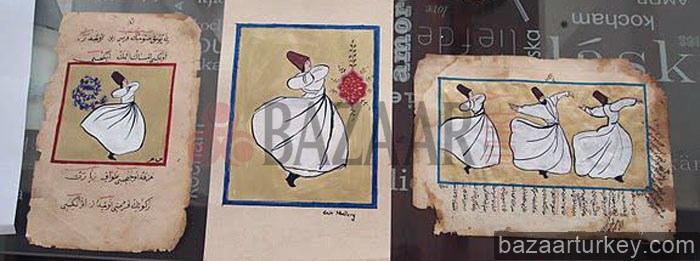
At first, the Persian influence, especially that of the Herat school during the Timurid period, was apparent. Paintings in this style were found mostly in the works of the famous poet Ali Şir Nevai, written in an eastern dialect of Turkish. However it was under Süleyman’s reign that Turkish painting began to acquire its distinctive and fundamental character. After his ten years on the throne, topographies of cities and fortresses and miniatures documenting the life of the Sultan gradually gained importance.
The Death of Hussein Pasha Suleymanname (Book of Suleyman)
One interesting group of miniatures are those that illustrate military campaigns. A number of these, noteworthy for their great originality, were both written and illustrated by a certain Nasuh al-Silahi, nicknamed Matraki because of his expertise in a sport called matrak. Two of his most important works are preserved in the library of Topkapı Palace. One of them relates to events from the time of Bayezid II and its illustrations depict conquered fortresses and cities (R. 1272). The second illustrates Sultan Süleyman’s military expedition against Hungary in 1543 and the Mediterranean campaign of Barbaros Hayreddin Pasha, the famous admiral Barbarossa, which took place in the same year 1608. It contains figureless representations of Mediterranean ports and cities and of Ottoman encampments en route to Hungary.
Nasuh’h best known work is the Beyan-i Mezanil-i Sefer-i Irakeyn (Description of the Halting Stations in the two Iraqs), which describes Süleyman’s military encampments near the cities they passed during his 1534-35 campaigns in Iran and Iraq (UK, T.5964) Nasuh’s portrayal of cities brought a degree of expressiveness to painting not found elsewhere in the Islamic world. Besides acting as sources of history, these miniatures paved the way for the development of a new form that can be called the “cityscape.”
It had been an Ottoman tradition beginning with Mehmed II to appoint a special writer to document the main events of the sultan’s reigns.
These chronicles are known as şahname’s (books of kings) and their authors şahnameci’s (writers of şahname’s). By taking the name of the Persian heroes in Firdausi’s famous epic poem, the original Şahname, the Ottoman sultans sought to supplant-metaphorically-their Persian counterparts. Though the tradition was already well established by the time of Süleyman, it was during his reign that the Şahname acquired its formal character and bequeathed us some of the most magnificient examples of Turkish miniature art. Süleyman appointed Arifi, who had gained renown for his poetry in Persian, to the position of Şahnameci and assigned him the task of writing a complete history in verse of the Ottoman sultans. In order to carry out the Sultan’s project, Arifi was given the most talented calligraphers and painters of the time. The complete work comprises five volumes. The first, in a private collection, is devoted to a history of the Prophets. The location of the second and third volumes is unknown. The fourth, called the Osmanname (Book of Osman. New York, Kraus Collection), describes and illustrates events from the period of Osman Gazi the founder of the dynasty, up to Yıldırım Bayezid, the ‘Thunderbolt.’ The fifth, known as the Süleymanname (Book of Sultan Süleyman is in the library of Topkapı Palace Museum and deals with the period between 1520-58 during the reign of Sultan Süleyman the Magnificent. Illuminated with 69 miniatures, the book, highly innovative in layout, set the standard for later Şahnames. The elegance with which these court painters depict their subject marks a new stage in the development of the Ottoman miniature. From the point of view of Ottoman history, these are important paintings. They depict a number of victorious wars by which the Ottomans expanded their empire, such as the conquest of Rhodes, the siege of Belgrade, the Tabriz and Hungarian campaigns, the well known Mohacs episode and the seizing of Buda.
Tarih-i Sultan Bayezid Nasuh al-Silahi al Matraki
A variety of other scenes are also portrayed, including royal hunts, the presentation of gifts to the sultan, and the receptions, of famous people like Admiral Barbarossa and Devlet Giray Han, who was the ruler of the Crimean Tatars.
Besides the matchless illustrations in the Süleymanname, the reign of Süleyman has also left us important examples of portraiture. Turkish portrait painting, which began during the reign of Mehmed the Conqueror but suffered a decline under his immediate successors, was revived during these years by the Turkish navigator Haydar Reis, who used the pseudonym Nigari and whose most important works are preserved in the Topkapı Library. Portraits of Sultan Süleyman, the great Barbarossa, and Sultan Selim II are among his works painted on single sheets. His use of dark green, bordering on black as the backround of his portraits is one of the distinguishing features of the artist’s personal style. Nigari was to become, next to Sinan, the master architect, the greatest Turkish portrait painter. The age of Süleyman the Magnificent made visible to us through the portraits of Nigari, Matraki’s city topographies, and the Süleymanname was an extremely important period in Ottoman miniature painting, firmly establishing its subject matter and giving birth to a new style.
The most characteristic examples of Ottoman miniature art were produced in the second half of the sixteenth century as a result of the patronage of Sultans Selim II (1566-74) and Murad III (1574-95). The reigns of these sultans mark the classical period of Ottoman miniature art and the most productive era in historical painting. Throughout most of these years, the Turkish and Persian works of Seyyid Lokman, the court-appointed Şahnameci, were illustrated in rapid succession by selected painters working in the imperial studio. Foremost among them was the master Osman, the greatest name in Ottoman historical painting and the artist who mostly shaped Turkish miniature art during the classical period. It is known from documentary sources that Osman occupied a position in the court atelier from the first years of Selim II’s reign, becoming its most productive and prominent member during the years 1570-90. In addition to working with Lokman, he was responsible for illustrating the works of other writers as well. For many of these projects, he headed groups of artists chosen from the court atelier and directed their work. In the period from 1558 until 1592, Osman and his team illustrated several of Lokman’s Şahnames, which are written in Persian and in verse. The first of these, which actually dates back to the final years of Süleyman’s reign, is called the Zafername (Book of Victories. DCB, No.413). Lokman’s second “book of kings, the Şahname-i Selim Han”, is concerned with Selim II’s sultanate (TSMK, A.3595). The third is the first volume of the Şehinşahname (Book of the King of Kings) and describes events that occurred between the years 1574-81 during Murad III’s reign (IUK, F.1404). The last Şahname to emerge from this collaboration between Lokman and Osman was the second volume of the Şehinşahname, covering the years 1581-88 of Murad’s reign (TSMK, B.200). These Şahnames, all with the same dimensions and layout, contain more than two hundred miniatures of a documentary nature, detailing important architectural works, military campaigns and major victories, important court ceremonies and celebrations, the sultans’ accession to the throne, and their deaths.
TURKISH MINIATURES
Turks had the tradition to illustrate manuscripts during the cultural periods before Islamic belief. Paper that could be rolled started to be made in China with plant fibers in 105 B.C. No written or illustrated document has yet been found from the time of the Chinese Han dynasty, of Huns and Göktïrks.Nevertheless, the large quantities of stone engravings, textiles,ceramics, works of art made of metal, wood, leather which have survived to the present day, prove that the above mentioned cultural circles were quite developed in other fields of art. The oldest examples of Turkish pictures for walls are from the 6th, 7th and 8th centuries. The withering influence of natural conditions have prevented the survival of these first examples.
The Oldest Turkish Illustrated Documents
The oldest illustrated documents on paper among Turkish tribes, are from the period succeeding Akhuns. These documents dating from 717-719 are in Turkish, Chinese and Arabic and they belong to a Turkish emir who battled with Moslem armies in Pencikent near Samarkand. This prince was taken prisoner, and his palace was ruined 722. The wall drawing are the most important part of Turkish cultural treasures. Von le Coq who has researched Central Asian Turkish culture writes this: “Turks have scattered all of their written cultural products in the dusty roads of steppes and deserts while migrating to the west.” Prophet Mohammed tranquilizes the dragon on the way of the caravan, “Siyer-I Nebi” end of the 16th century. Samarkand was renowned during 6th-8th centuries by its drawing workshops where illustrations on wood, plaster and leather were made. These works influenced greatly the Anatolian Seljuk period. The most important development of the 9th century Uygur Turks in the art of painting, was accomplished by the painters and their school in the town of Kizilkent. Their sense of light in pictures and their search for the influence and impression of shadow and light, served largely for the formation of Seljuk miniature school and canalized it. The Tun-Huang monastery and library of Uygur Turks has a special importance. Among thousands of books in the library there are the oldest Turkish gilded and miniature manuscripts. The oldest wooden print and illustrated book in the world belongs to Uygurs and is in the above library. The date of the book is 868. Another important aspect of this find is that some manuscripts have been written in letters same with the ones on the Göktïrk Orhun epitaphs.
Moslem Miniatures
The oldest miniatures found in Moslem circles are from the 9th, 10th, 11th centuries and they have been found in Egypt. Islamic sources of later periods also confirm this fact. Seljuk Turks established the first school of miniatures in Baghdad within their vast empire covering Turkestan, Iran, Mesopotamia and Anatolia in the 12th century. This school has continued until the end of the 14th century, but the most important works and examples are from the 13th century. “The Seven Sleepers”, Important characters in history 1583 Islamic culture was influenced also by antique heritage in the field of miniatures. The books of the antique age were read and translated. These manuscripts were illustrated. Moslems used these original illustrations in the translations; but although the text were not changed in the later translations, the miniatures were made differently. There are even differences of style in these early works. The miniatures of the antique age are disorganised and most of them have descriptive qualities. In Seljuk miniatures, on the contrary, the subject was composedly depicted. The subjects were taken from the antique age, whereas the style was influenced by oriental, Uygur painting. The main characteristics of the Seljuk-Baghdad school were vigour, briskness, power of expression, caricature quality, over ornamentation, lack of scenery and accentuation of figures. Before starting to study the Ottoman miniature, I shall refer to two more schools of miniature related to Turks. This attitude has a main reason, and that is the inevitable necessity to know the contradictory schools in order to comprehend to one under study. The Chinese influence in the 14th century Mongolian miniatures, is felt in the landscapes made with Chinese ink. The dominant characteristics of those pictures were Chinese style clouds, the curved lines and flower outlines. The colours were dull. There were no figures in the early works. Scenery and figures have been united in the Mongolian miniatures after the Chinese influence ended. Realism, portrait Characteristics, light and shadow, perspective were dominant in large figures. The figures got smaller towards the end of the 15th century, during Tamerlane reign. The surfaces were covered with superficial and decorative all over designs. The dominant subjects were romantic stories. The animals in “Kelile and Dimne” fables were pictured within sceneries. Folk stories such as “Hïsrev and Shirin”, “Leyla and Mecnun” have been depicted in the poetic atmosphere of poet Sadi. The abstract expression gave the same value to each figure as in the carpet motifs.
The 16th Century Ottoman Miniatures
The conquest of Istanbul was the first step into a new phase of the Ottoman cultural life. The characteristics of the period in the field of paintings and miniatures may be summed up as the meeting of the eastern and western painting schools, as the widespread interaction and communication and as the widespread availability of display. While the Hïsrev and Shirin, Sheraz school in the beginning of the 15th century, Iran Italian painters called by Mehmet the Conqueror continued their activities, Turkish artists on the other hand, carried on the domestic traditions. We can see this dual influence in the works of Sinan Bey from Bursa, who was the pupil of Hïsamzade Sunullah and Master Paoli. Meanwhile, upon closure of the Heart academy for painting in the beginning of the 16th century, its famous instructor Behzat was met with a deserved esteem in Tabriz in 1512. His pupils began to produce works in his style. Their works reached the gates of Istanbul. Sultan Selim Iran and Aleppo to Istanbul after the seizure of Tabriz and he ordered his men to create favourable conditions for those artists’ work. Soon after Shah Kulu from Tabriz was leading these artists in an academy which was called by the Turks “Nakkashanei-i Irani” (The Persian Academy of Painting). “Nakkashane-i Rum” (The Ottoman Academy of Painting) was established upon the reaction of the Ottoman painters. It goes without question that the period beginning with Mehmet the Conqueror and ending with Sultan Selim I, was one of the most interesting and important phases in Turkish painting and miniatures. Various styles and ways of expression were searched, the influences were are guide and syntheses were attained. Now we shall take a look at the Turkish Academy during Sïleyman the Magnificent reign. Turkish miniature lived its golden age during that period, with its own characteristics and authentic qualities. The most renowned artists of the period were Kinci Mahmut, Kara Memi from Galata, Naksi (his real name Ahmet) from Ahirkapi, Mustafa Dede (called the Shah of Painters), Ibrahim Þelebi, Hasan Kefeli, Matrak_i Nasuh, Nigari (who portrayed Sultan Selim II and whose real name was Haydar. He was a sailor).
Miniature was again on full force during Murat III’s reign. The famous miniature painters of the age were master Osman, Ali Þelebi, Molla Kasim, Hasan Pasa and Lïtfï Abdullah. We should also mention the Persian, Albanian Bogdanian and Hungarian artists who largely contributed to the art of miniature in the cosmopolitan Ottoman society. According to the registers of the 16th century, the number of miniaturists in Sïleyman the Magnificent’s court only were 29 instructor-masters and 12 apprentice-pupils. These numbers increased highly towards the end of the century. Few of the miniatures are dated. The miniaturist signed his work only if he alone has painted the portrait or the scene. The works were usually anonymous. The head painter used to draw the main composition with thin brushes and then his assistants and pupils painted in part by part. It is difficult to distinguish individual styles. The head painter, the author and writer of the story were also depicted in some of the miniatures. The most refined lines forming the basis of the picture were the lines bordering spaces, the lines on coloured surfaces and the lines of facial expression. The design approach was usually symmetrical.
The terms of the age were: “Nakis-miniature; nakkaspainter, miniaturist; tasvir-depiction; mïsavvir-depicter; nakkashane/nigarhane-workshop; kalemi siyah-pencil; sebil yazmak-to portray; tahr-composition; tarrah-designer of the composition; endam-symmetry, balance; nakkasan group of miniaturists. The beauty of the Turkish miniatures spring from the contours and the sense of colour. The paper straightened by a heavy press was covered by red lead. The finish consisted of egg-white, starch, lead carbonate, gum tragacanth, salt of ammonia. The finished paper had a luminous appearance and it was creamy in colour. After the text and tables were completed, the paper was handed to the miniaturists to be painted. The miniatures were divided as 1)Illustration of books, compositions (depiction of certain subjects and events) and 2)portraits. The subjects of the miniatures were as follows: Shahname and Shehinshahname-The public and private lives of rulers, their portraits and historical events; Shemaili Ali Osman-portraits of rulers; Surname-pictures depicting weddings and especially circumcision festivities; religious subjects (Siyer-i Nebi); Shecaatname-wars commanded by pashas; Iskendername-in ancient Moslem belief Alexander the Great is considered a prophet; Humayunname-epics, heroic deeds and animal fables; literary works and folk stories such as Leyla and Mecnun; anthologies; the world of botanies and animals, scientific books on alchemy, cosmography and medicine; technical books; love letters; horoscopes translations.The miniatures in the translations were sometimes directly copied from the original and sometimes they were authentically made. In such cases, ones should know the different styles of the other Moslem miniatures such as Iran and India. Kaaba depictions, sports and especially horse-riding scenes took place in the Turkish miniatures.
Portrait of Murat III. “Important Characters in History, 1583” The clear and simple expression attained a magnificent style by plain drawing and colours. There was neither lyricism nor idealism, but only realism based on close observation. There were humorous expressions of daily life. This expressionist style revealed itself in a very few lines in the moving bodies. Refined details were rare. The purpose was to reflect and attain the best within simplicity. The combat order were shown on war miniatures. It is understood that the miniaturists joined those campaigns. The artists did not consider perspective and the third dimension. They portrayed people in straight profiles or from the front instead of the three fourth profile seen in Persian miniatures. The relation between nature, objects and figures was not taken into consideration. The relation between nature, objects and figures was not taken into consideration. The important point was the main theme. The secondary themes and scenes were complementary to the composition. The borrowed look of the figures indicate that they were the ordinary individuals of protocol in every period. Pride, faithfulness and anxiety signified the order of the state with a humorous approach. The composition and the contours were worked attentively. The order of places was very important. Realistic scenery and topographic views were rare. Artists like Matrak_i Nasuh who depicted the Iraqian campaign of Sïleyman the Magnificent with details of the resting places and the Mediterranean ports, were very few.
The colours were obtained by powdered dyes mixed with egg-white. The colours were strikingly brilliant. Contrasting colours were used side by side with warm colours with an avant-garde approach in colour selection. In nature depictions spots of colour were used. The colour nuances of the same shade were masterly applied. The most used colours were bright red, scarlet, green and different shades of blue. The domes were painted pale blue. The way black, white, yellow and gild were used liberally had a special quality. Gild was used in architectural details, in the background and the ground of calligraphic works. The sky and clouds were never depicted in their natural colours. Turkish art of miniature, as all the other handcrafts, followed the historical line of the state and had its golden age during the 16th century. Turkish-Islamic Art; The Miniatures of the Zubdat-al-Tawarikh
Source: Antika, The Turkish Journal Of Collectable Art , July 1985 Issue
LEVNI ABDULCELIL CELEBI – Ottoman Painter
The beginning of the eighteenth century was the start of both opening to the Western world and increasing the necessary self-renovation efforts for the Ottoman Empire. Although this period during which cultural relations with Europe were increasing is named “the westernization” or “the renovation” period, it is much too complicated to be explained in a single phrase. In the beginning of this process, Ottoman Art progressed along a path balanced between the traditional and the new. Between the years 1703 and 1730, under the patronage of Sultan Ahmed III and his famous and powerful Grand Vizier, Nevşehirli Damat Ibrahim Pasha, opportunities were provided in all art fields. As a result, extremely creative and productive artists began to appear.
The beginning of the eighteenth century was the start of both opening to the Western world and increasing the necessary self-renovation efforts for the Ottoman Empire. Although this period during which cultural relations with Europe were increasing is named “the westernization” or “the renovation” period, it is much too complicated to be explained in a single phrase. In the beginning of this process, Ottoman Art progressed along a path balanced between the traditional and the new. Between the years 1703 and 1730, under the patronage of Sultan Ahmed III and his famous and powerful Grand Vizier, Nevşehirli Damat Ibrahim Pasha, opportunities were provided in all art fields. As a result, extremely creative and productive artists began to appear.
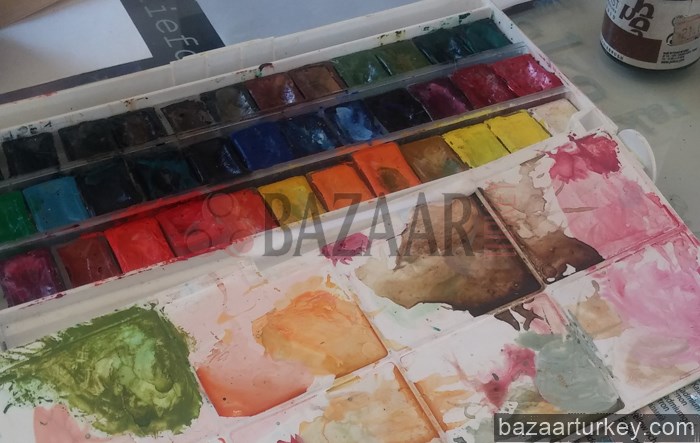
Levni Abdülcelil Çelebi is the most accomplished and famous Ottoman painter of the early eighteenth century. Levni received the title of court painter under Sultan Mustafa II (r. 1695-1703) and Ahmet III (r. 1703-1730), for whom he executed his marvelously composed masterpieces. Levni is the artistic extension of the tendencies and directions summarized as “westernization” that started to appear in the beginning of the eighteenth century. His personality and artistic talent, and the period’s conditions have mutually affected each other, opening the way for a new point of view in the Ottoman art of painting.
There is not enough documentation on Levni’s origin and identity. One can shine light on his identity by looking at his work. There is only a short piece of information about Levni in the ‘Mecmua-i Tevarih’ that Hafız Hüseyin Ayvansarayî wrote in the second half of the eighteenth century. The author says that Levni Abdülcelil Çelebi, started work as the apprentice of an illuminator when he came to Istanbul from Edirne; that he showed progress in his work and became a master working in the saz style. Later that he was inspired to become a painter and he became the master of this field. Ayvansarayî continues to declare that he was the leading painter, until Sultan Mahmud Khan ascended the throne and depictions with perspective was introduced. The author states that Levni died in 1732, and that he is now buried across the Sadiler Tekkesi, opposite Aktürbe, near the Otakçılar Mosque. Ayvansarayî concludes that Levni also wrote poems and some other works. This information clarifies that the artist went to the palace atelier, nakkaşhane, when he arrived from Edirne, and at first worked in the saz style. Ayvansarayî does not mention when Levni came to Istanbul from Edirne. It is thought that Levni must have settle in Istanbul before 1710 and never left Istanbul after 1718.
Levni has made a series of sultans’ portraits, ending with that of Sultan Mustafa II’s for Demetrius Cantemir’s book, The History of the Growth and Decay of the Ottoman Empire. The originals of these engraved portraits printed in the book have not survived to our day. Kebir Musavver Silsilname (A3109) in the Topkapı Palace Museum Library is a series of sultans’ portraits that constitutes a turning point in Ottoman portraiture. While painting these portraits, ending with that of Sultan Ahmed III, Levni used creative novelties taking traditional elements as a base. He has introduced new understanding of painting his figures, compositions and his technique, in his miniatures that depict the circumcision ceremonies of Sultan Ahmed III’s heirs to the throne (1720). Surname-i Vehbi (A3593), in Topkapı Palace Museum Library, is named so after the poet of its text, Seyyid Vehbi. In this work there are 173 miniatures by Levni, exhibiting his talent for observation and his documentative attitude. Information on each page of the Surname-i Vehbi is given, yet details are included only about the miniatures which have been chosen due to both their distinction in the manuscript and the importance of the characters in the depicted scenes. Levni has also shown his sensitivity to the subject of human figures in an album of full body portraits now in the Topkapı Palace Museum Library (H.2164) of the period’s typical characters, depicted in his personal style.
Levni was both a painter and a poet; he has expressed his artistic personality both visually, in his paintings and rhythmically in his poems. The fact that the title ‘Çelebi’ is used with Levni’s name, shows that he was an educated, elegant, well mannered, respectable gentleman from a high social class within the Ottoman society. In one of his poems, the artist states that the pseudonym ‘Levni’ was attributed to him by others. Meaning both ‘colorful’ and ‘varied’, the name ‘Levni’ truly describes his personality reflected in his very colorful and diverse style. Levni’s poetry is a quality that makes his ‘special’. ‘Levni the Poet’ whose identity as a painter as a poet and who occupies only a small passage in literature books as an unexceptional folk poet, takes his deserved place in literature books as an unexceptional folk poet, takes his deserved place in literary history with his collected works.
The point of view developed by Levni has both influenced later artists and opened a path of innovations in the Ottoman art of depiction. Levni’s high skill in expressing his open minded character has made him a key figure in a turning point of Ottoman art history, making him the subject of a research bearing interesting results.

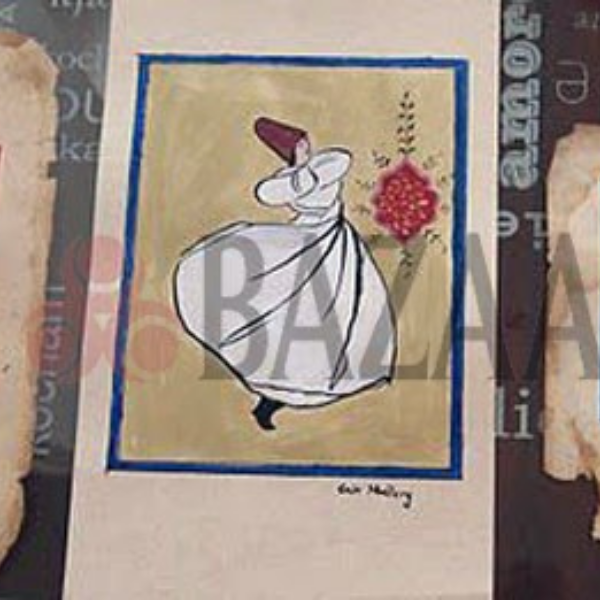

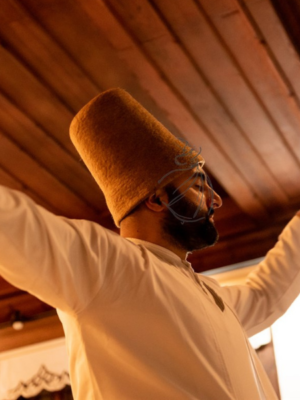
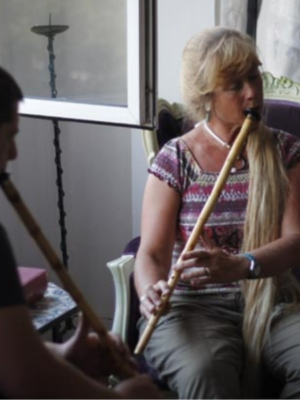
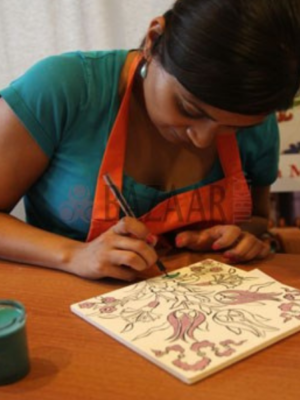
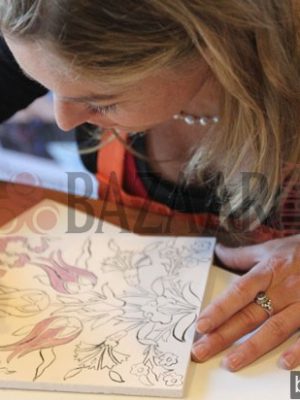

Reviews
There are no reviews yet.